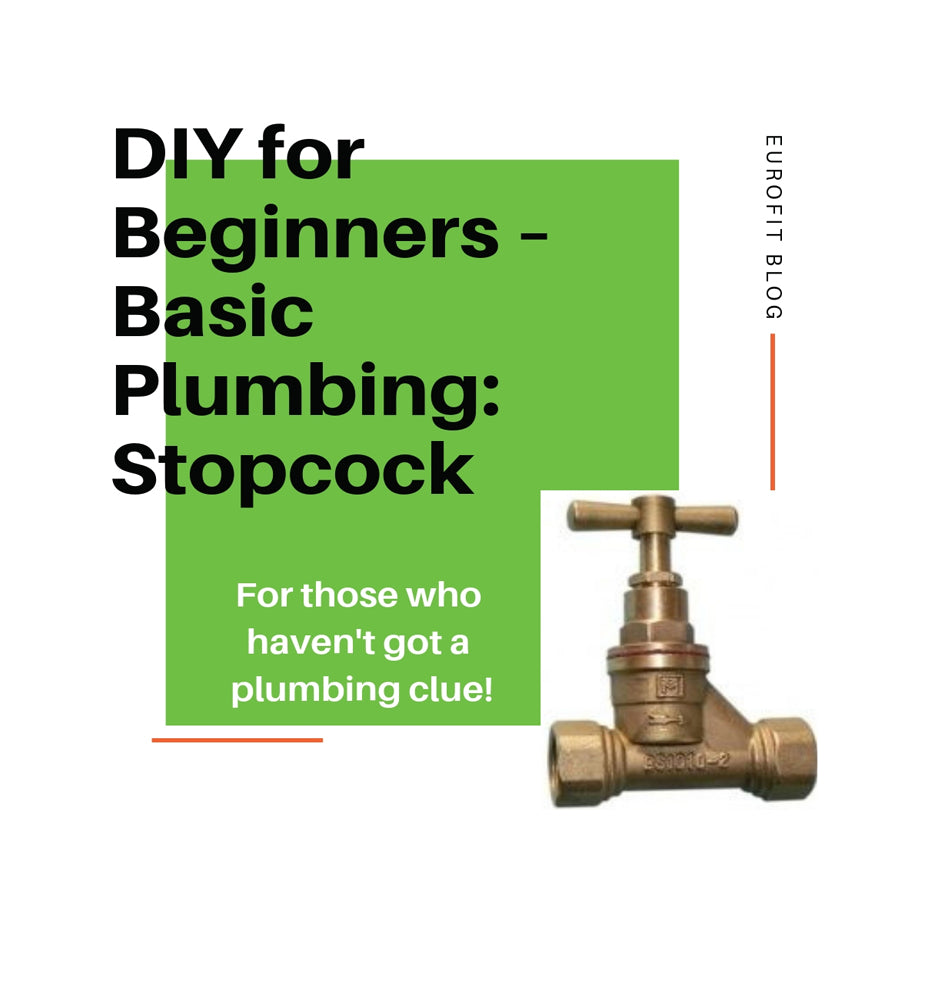All about stopcocks
Calling out professional tradesmen can be expensive (plus parts, then you got labour costs plus VAT!), and whilst sometimes, it’s inevitable – in many cases you can do the work yourself, as long as you’ve got some basic knowledge, and the right tools. Luckily, this guide should certainly point you in the right direction all to save you time and money!
In this feature we’re going to be taking a look at basic household plumbing, focusing on how to locate and identity the stopcock and knowing the kind of water system in your home (so you’ll know next time to easily cut the supply should there be a leak or blockage).
Stopcocks
If like a lot of home owners and DIY goers, you may not know what a stopcock is. Well, there are the single, most important part of your household plumbing, which is why you need to know where they are located and how to use them.

The purpose of a stopcock is to switch off the cold water to your home, and are essential if you have a leak, or need to undergo any repairs. Should the worst-case scenario happen and say you have a burst pipe which releases heavy amounts of pressurised water, knowing and understanding where your stopcock is can help you minimise damage caused to your home.
Locating your stopcocks- indoor and outdoor
Generally, homes have two stopcocks – one inside, and one outside, and you’ll need to know where both of them are located. Generally, your inside stopcock will be found in the kitchen, under the sink. However, sometimes this isn’t always the case – if so check behind a cabinet kick board, or may even be in another room.
Outside stopcocks can be more difficult to locate. If you’ve got a water meter fitted, then generally, they will be located in the same chamber to this. Sometimes (especially on older properties, or in flats), you may share an outside stopcock with multiple properties.
If this is the case, your outside stopcock will be located in an underground chamber, somewhere near the boundary of your property. Look for a small manhole cover – it could be metal or plastic, and may have the word water, the letter W, or the name of your water provider printed on the top.
Operating a stopcock
Operating a stopcock is usually a simple case of turning it fully clockwise. Often, the stopcock works just like a tap. However, sometimes you may need a special key to operate it (these are usually in the same location as the stopcock) If you do not have access to a key for your stopcock you can buy a universal replacement fairly cheaply at any plumbing merchants or DIY shop.
Preserving your stopcock
Over time, stopcocks can become stiff which makes the, difficult to operate especially if they haven’t been used in a while. This would prevent you from easily turning off your water supply in an emergency.
To keep your stopcock in good operating order, you should open and close it every couple of months, and give it a spray with some WD40. This is to keep the parts lubricated and rust free a couple of times a year. This can be purchased in most DIY shops or plumbing merchants.
If you’re struggling to open the stopcock for any reason, then try using a towel or rag to gain additional grip. If this fails, then spray it with some WD40, and leave it for 10 minutes, before trying again. If you’re still struggling, then the safest thing to do is to call out a professional plumber, who will be able to loosen it for you, or replace any ceased parts as necessary.
Direct and Indirect water
There are two types of water systems – direct, and indirect. As the name suggests, in direct systems, the water comes directly from the mains, whereas in indirect systems, your water comes from a cold-water tank, which is fed by the mains.
It’s important to understand which system you have, as an indirect system, you may still end up with water coming out of the taps, even if you’ve shut off your stopcocks.
The Gate Valve
Indirect systems utilise both a hot water and a cold-water storage vessel, which are usually located in the attic, loft, or an upstairs cupboard. A gate vale is located under each of these tanks.
Please note: before doing any plumbing work, it’s important to turn these off, as the water held in these tanks will flow even if you’ve already turned off your stopcock.
Isolation Valves
You might not want to cut off water to your entire house, and with small jobs, like fixing a tap, it usually isn’t necessary – all you’ll need to do is to find the right isolation valve (also known as a service valve).
An isolation valve should be fitted to the water pipe that feeds each tap, and water-using device in your home, including washing machines, toilets, showers and dishwashers.
In order to locate them, look along the water pipe and find what looks like a flat, slot headed screw. The direction of the ‘slot’ should be parallel with the valve itself (and sometimes, with an arrow printed on the valve) – this means that the valve is open, and water can flow through it. To close it, take a flat-headed screwdriver, and insert it into the slot, before turning it one quarter of the way round (90°) until it is perpendicular to the valve.
Written By Chloe Burnett- Marketing Assistant @ Eurofit
And that’s it! Hopefully you found this guide helpful and informative, why not share our blog and spread the word!
